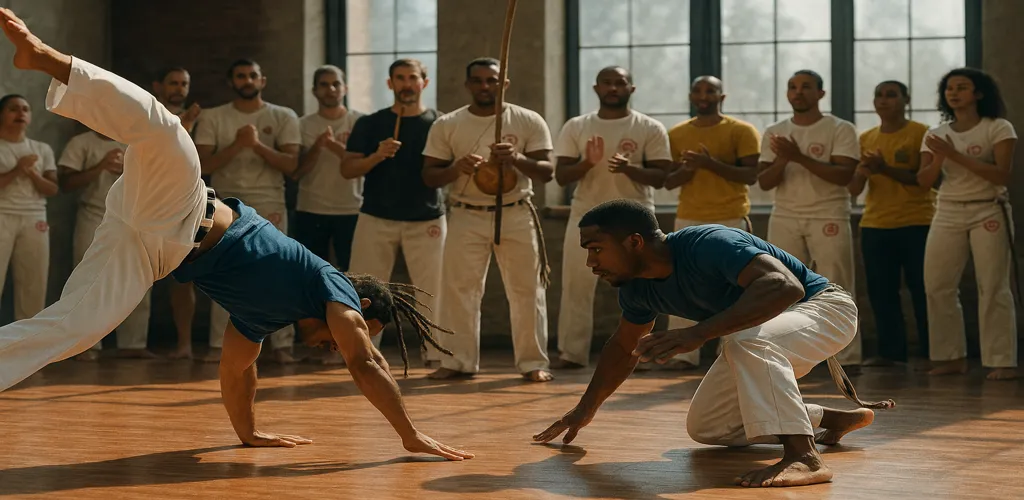Regional

Capoeira Regional is a dynamic and structured style of capoeira developed by Mestre Bimba in the 1930s as a modernized, efficient fighting system. Designed to emphasize combat effectiveness, discipline, and athleticism, Regional introduced a formal curriculum and removed some of the more ritualistic and theatrical elements of traditional capoeira. It incorporates powerful kicks, precise counters, and upright movement with a faster rhythm set to the berimbau. Regional laid the foundation for capoeira’s recognition as a legitimate martial art in Brazil and abroad. It remains a respected and widely practiced school with strong links to physical education and military training.
Regional Essentials
About Regional
This section offers a detailed introduction to Capoeira Regional—its structured approach, emphasis on efficiency, and legacy as a formalized martial art. Learn what defines this school and how it differs from other styles.
Regional History
Explore how Mestre Bimba revolutionized capoeira by creating Regional in response to social repression and the need for a structured combat system. This section traces its rise, institutional acceptance, and influence.
Philosophy & Approach
Capoeira Regional values discipline, control, and directness. Here, you’ll discover how the art balances martial realism with strategic play and educational principles.
Techniques & Style
This section breaks down Regional’s characteristic moves: fast kicks, evasions, takedowns, and formal sequences. Learn how Mestre Bimba’s sequences (sequências) shaped the style’s technical identity.
Traditions & Etiquette
Though less ritualistic than Angola, Regional still upholds etiquette through salutes, structured training, and musical roles. This section explains classroom and roda conduct.
Uniform & Symbols
Students typically wear white uniforms with colored cords reflecting rank. This section details the Regional visual identity, including Mestre Bimba’s signature attire and school patches.
Weapons
Capoeira Regional is an unarmed system. This section addresses how training focuses entirely on the human body, rhythm, and reaction without incorporating external weapons.
Ranking System
Mestre Bimba introduced one of the first capoeira ranking systems. This section explains his cord system, graduation rituals, and how ranks are earned through performance and knowledge.
Regional Glossary
Explore essential terms used in Regional capoeira, including names of sequences, techniques, and commands specific to Mestre Bimba’s methodology.
Notable Figures
Meet the key figures of Capoeira Regional, starting with Mestre Bimba and continuing with his direct students who carried the style across Brazil and the world.
Branches & Organizations
This section explores modern schools and organizations that preserve Bimba’s lineage and Regional teachings, along with regional adaptations and institutional branches.
Competitive Format
While not sport-oriented originally, Regional training influenced competitive capoeira formats. Learn how speed, technique, and control are assessed in public rodas and events.

